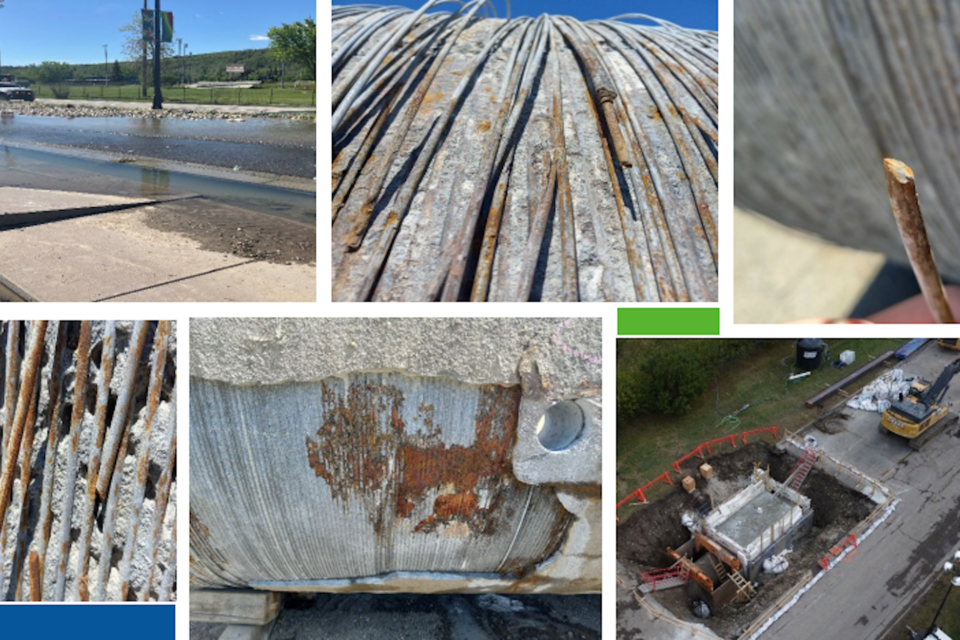The City of Calgary released the full report of the investigation into what caused the catastrophic break of the Bearspaw South Feeder Main in June, which impacted water users in Calgary, Airdrie and other surrounding communities.
As stated before, the report details how multiple factors contributed to the water pipe failure on June 5. This includes the breakage of a significant number of wires (known as prestress wires wrapped under significant tension around the pipe’s outer concrete core and are protected with cement mortar), resulting in a loss of the pipe’s ability to withstand pressure. The ruptured pipe experienced microcracking, or previous damage to the outer layer of the pipe, allowing soil contact with the prestress wires, according to the report.
As reported earlier, hotspots included signs of microcracking, some areas of high chloride levels in the mortar, pitting and corrosion of pipes, and wire damage.
The report also indicated that there is no sign the manufacturing standards applicable in 1975 were not followed. There was no sign of corrosion caused by stray electrical currents. The pump operations at the Bearspaw Water Treatment Plant and the connected secondary pump stations before the incident did not cause pressure issues that led to the failure.
A transient pressure event did not occur immediately before the rupture. Lastly, live loading subsequent to the construction in 1975 is not believed to be a contributing factor.
“Our priority now is planning for the long-term rehabilitation of the feeder main and implementing proactive measures to ensure a reliable and resilient water distribution system for Calgarians," said Steve Wyton, Manager, Asset Management Planning. "By combining advanced monitoring technologies, contingency planning, and strategic investments, we’re taking meaningful steps to safeguard this critical infrastructure and support our city’s growing water needs.”
In early 2025, interim updates will be provided on the progress of the feeder main's redundancy and advancements in north and south water servicing options. Additionally, an implementation plan is expected for the feeder main by mid-2025 to strengthen system redundancy.
During the last update in November, City officials said they were looking at building redundancy in its water distribution system.
Two options the City was looking at to improve the system include lining existing pipe with a new pipe or building a new parallel pipe, potentially using micro tunnelling. Criteria being considered for the two options include the resilience achieved, construction time, impacts of construction, and cost.
Building redundancy is part of Calgary’s long-range plan, which will be presented to Calgary council in the new year.
To view the full report, click here.




